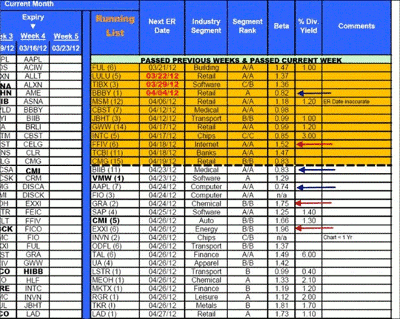Alan Ellman of The Blue Collar Investor explains why looking at Beta, one of the option Greeks, can help traders find the most efficient underlying equities for trading in a variety of different market conditions.
When we defined the option “Greeks” previously, it included a discussion of the price sensitivity of the option premium as it relates to the underlying equity, time, and other factors. One of the rules was that (all other factors being equal) an increase in share volatility will increase an option premium.
An equity with greater volatility will be associated with an option premium which generates greater profit but is also associated with higher risk.
One way to measure the volatility or systemic risk (market risk) of a security is to compare it to the market as a whole; the S&P 500 being the most commonly used benchmark. This is known as Beta. Beta stats are calculated using a process known as regression analysis wherein the “market” is assigned a number of “1. Beta is the tendency of a stock’s returns to respond to changes in the market.
See related: Know Your Option “Greeks”
The Numbers
- Beta of 1: The equity price will move in conjunction with the market. If the market is up 2%, so too will the stock (be expected to)
- Beta of less than 1 but above zero: The stock will be less volatile than the market. An example would be utility stocks
- Beta greater than 1: The security price will be more volatile than the market. An example would be tech stocks
An example: If a stock has a Beta of 1.5, it is considered 50% more volatile than the S&P 500. If the market appreciates by 8%, the expected return of that equity, based on its Beta, would be 12%. On the other hand, if the market declines by 8%, that equity would be expected to decline by 12%.
There you have the two faces of enhanced volatility: greater potential returns with enhanced risk. If an equity had a beta of .5 and the market was up 8%, one would expect that security to appreciate by 4%.
Negative Betas
A stock with a negative Beta tends to move in the opposite direction of the market. An equity with a Beta of -2 would decline by 10% if the market appreciated by 5%. It would increase by 10% if the market declined by 5%.
4 Core Problems with Beta
There is no such thing as a panacea in the stock market. This ratio does have its flaws and should not be relied upon solely in determining the risk of our investments. Here are the drawbacks:
- Beta does not account for business changes like a new line of products
- Beta looks backward and history is not always an accurate predictor of future events
- Beta ignores the price level of a stock
- Beta makes the assumption that the volatility is equal in both directions.
The drawbacks are more significant for longer-term investments. Beta can be extremely useful to us as one-month covered call investors. For our purposes of selling one-month call options, Beta is a good measure of risk.
NEXT: Using Beta to Make Trading Decisions
|pagebreak|Using Beta in the Decision-Making Process
High-Beta stocks will outperform an uptrending stock market and underperform a downtrending market. Low-Beta equities will underperform the uptrending market and outperform the downtrending market.
In a bullish market, I lean towards high-Beta stocks and sell out-of-the-money (OTM) strikes. In a bearish market, I favor low-Beta stocks and sell in-the-money (ITM) strikes. In neutral markets, I “ladder” (use a mix of) my Beta stocks in much the same way that I “ladder” my strikes.
You can find Beta information from several free sites such as Yahoo Finance. Simply type in the ticker on the upper left, look at left column on the next page, then click on “key statistics,” and look on the right side of the next page for Beta stats.
Members of my Web site can access Beta information directly from the running list on pages 3 and 4 of the Weekly Premium Report, as seen on the graphic below.
Note the relatively high-Beta stocks indicated by the red arrows and the relatively low-Beta equities highlighted by the blue arrows. Depending on your overall market assessment, this information can help determine your stock and strike selection.
Beta is simply one tool in our arsenal. Market conditions will dictate whether we should lean towards high- or low-Beta stocks. It should be used in conjunction with all our system criteria. No one factor will make our investment decision evident.
By continually throwing the odds in our favor using sound fundamental and technical analysis along with common sense, we will watch our profits rise and our successes dominate our portfolios.
By Alan Ellman of The Blue Collar Investor





















